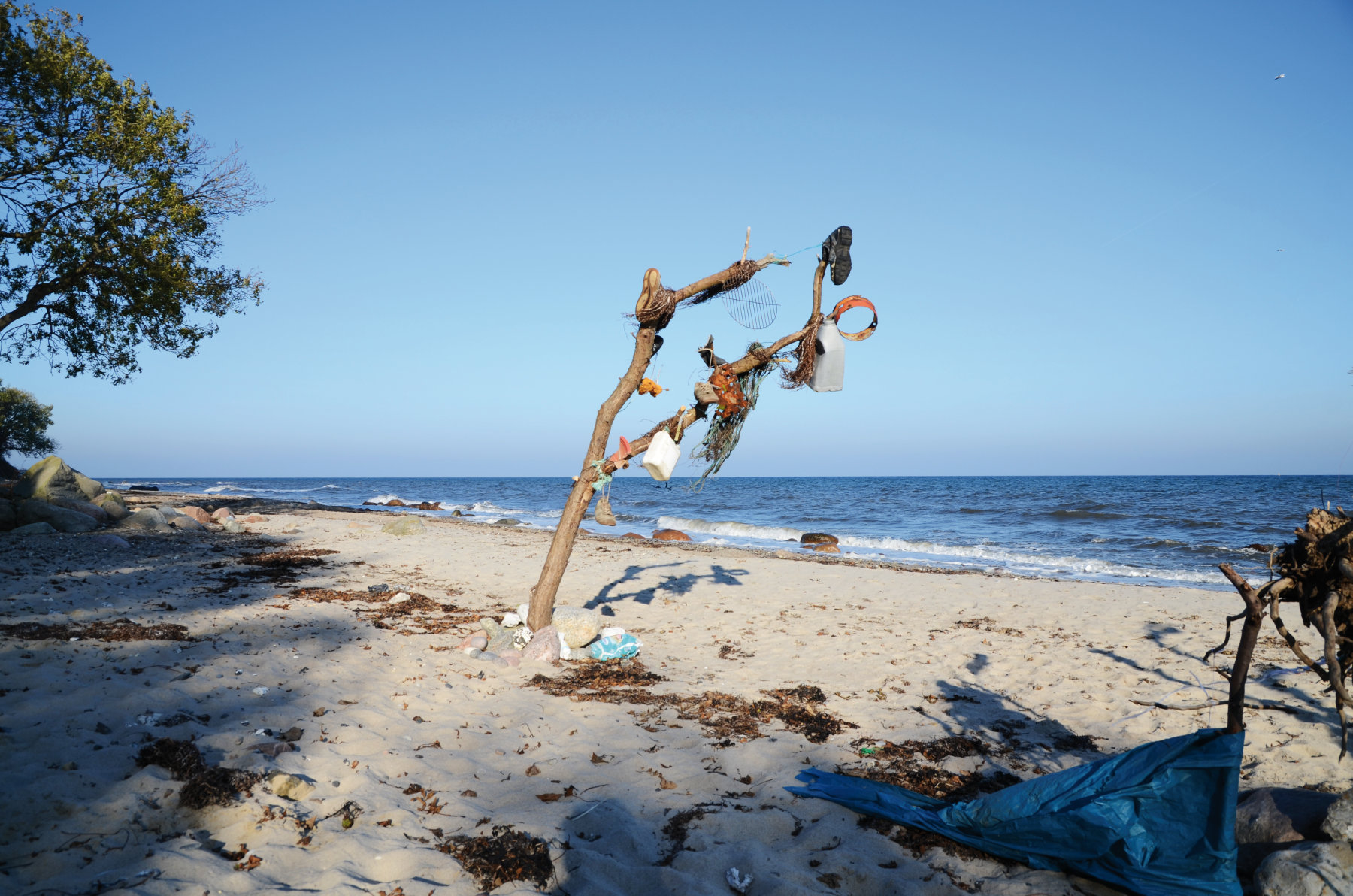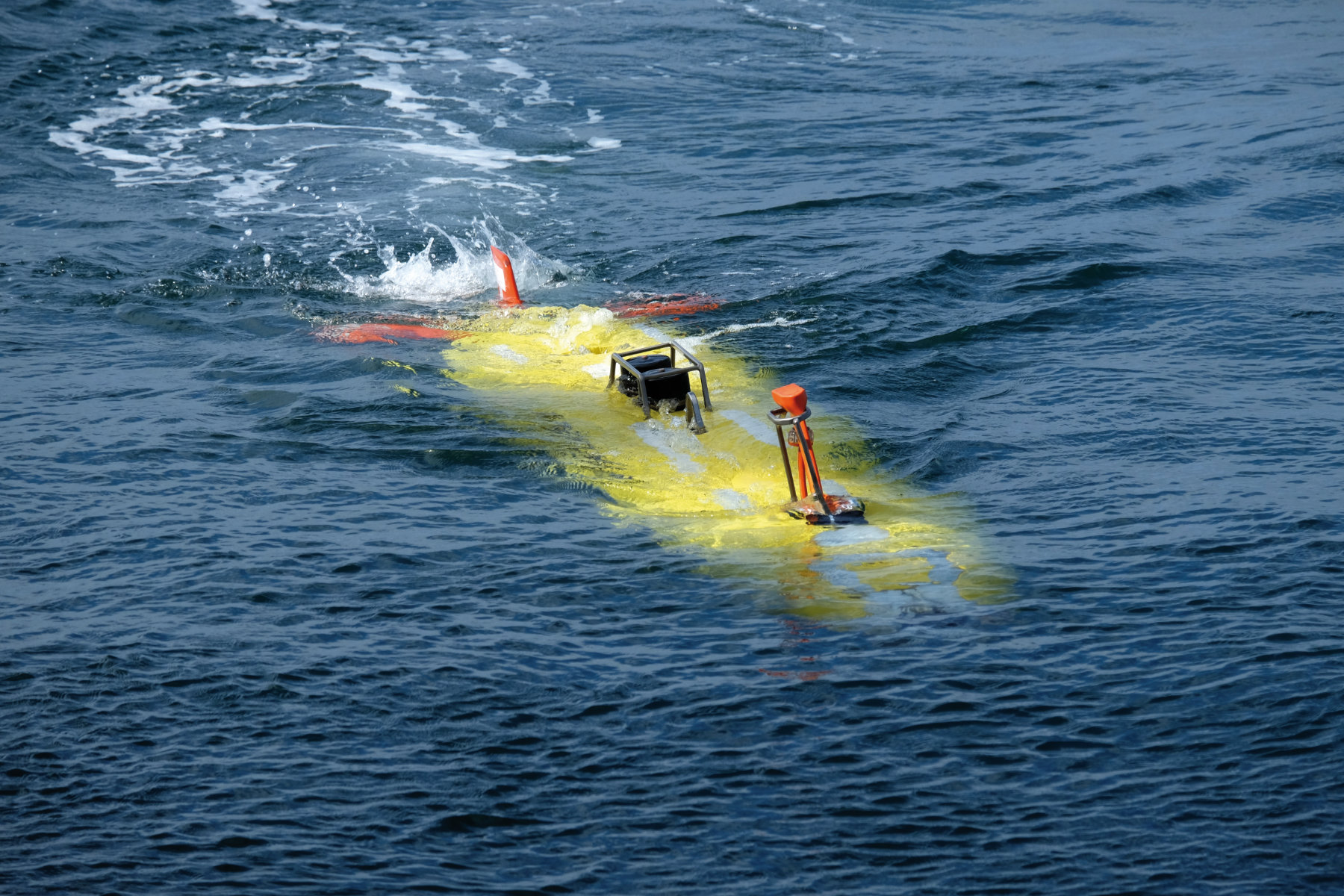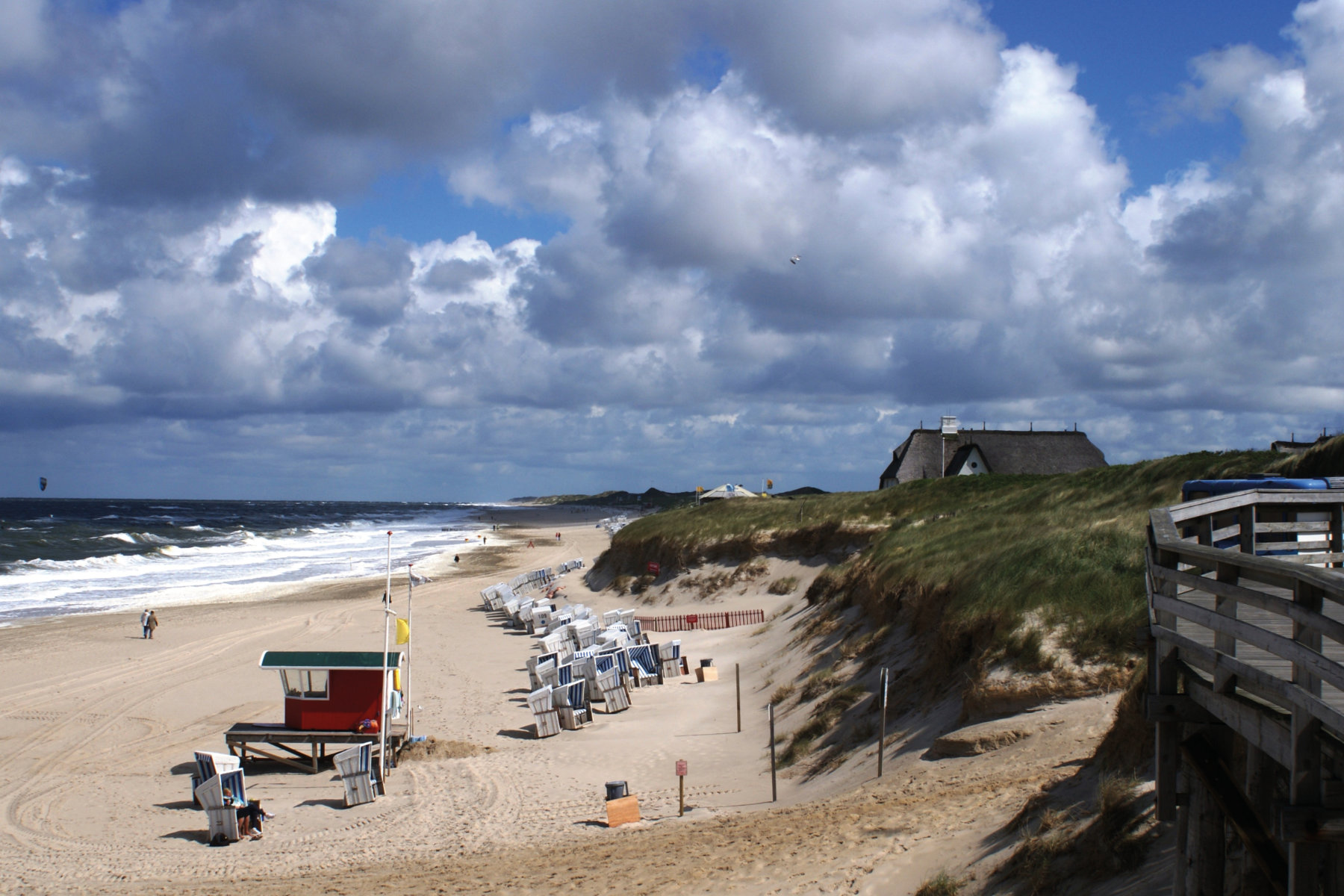The oceans store large amounts of heat and greenhouse gases, and they each have a direct role in the Earth's climate. So it is essential to understand past and present ocean behaviour if we are to model the future ocean and atmosphere in an era of climate change. This understanding of how the different parameters that drive the oceans relate to each other is needed to feed the future ocean models described in the next chapter.
An important example of improved understanding gained within recent years concerns the topmost layer of the ocean. This is where it exchanges heat and matter with the atmosphere. Contrary to ap-
pearances, the ocean often has a very thin layer of organic material at its surface. But how stable is it? And is it present in remote ocean areas, where there may not be a source of organic matter to maintain it?
Researchers from Kiel have shown that a thin, gelatinous layer may form on Arctic sea surfaces from organic compounds produced by microbes on the sea ice [1].
We know that microbial life in the top layer of water has a big influence on the amount of greenhouse gases and other chemicals that are emitted to the atmosphere from the ocean. Microscopic organisms there both use and generate gases that include methane, carbon dioxide, nitrous oxide, and many halogenated hydrocarbons. In recent years we have realised its vital importance to our understanding of present and future climates. Researchers in Kiel are now refining this knowledge.
One important aspect they are tackling is the chemistry that goes on at this interface. Gernot Friedrichs is a physical chemist by training. His studies involve the development and use of optical laser spectrometers. This has involved the development of ultrasensitive trace gas sensors which can be used on board research ships, despite being advanced pieces of lab equipment not normally found at sea. A team of Kiel researchers has demonstrated the reliability of these instruments on cruises with the research vessel Polarstern across the Atlantic ocean [2]. Their success means that more and more research groups worldwide now count on equipment based on cavity-enhanced spectroscopy, the principle that underlies this innovation. But Friederichs also researches other aspects of the ocean environment. One involves the use of a technique called non-linear surface-sensitive sum-frequency generation (SFG) spectroscopy to analyse water samples. It has allowed Kristian Lass and Gernot Friedrichs to establish a completely new view of the water-air interface [3]. Friedrichs says: "We now have the technology to detect organic matter in the nanolayer, the top few molecular layers of the ocean surface." This nanolayer forms part of the ocean's surface organic microlayer, which influences the roughness of the water surface by inhibiting the formation of capillary waves.
Kiel researchers have shown that plastic litter does not degrade within a reasonable period of time. Instead it accumulates in sediments, and will probably influence our environment increasingly over the long-term future.
At present it is generally believed that high concentrations of organic matter in surface water, which often result from natural algal blooms, are directly correlated with the abundance of the organic microlayer. But the SFG measurements have shown that there can be algae in the water but no organic material in the nanolayer, putting the current paradigm in question. This finding implies that microbial processing of organic precursor compounds may have an important role in shaping the microlayer [4].
They also suggest that satellite measurements of the colour of the ocean, the standard way of detecting chlorophyll and with it algal blooms remotely, may not tell us the whole story about what happens at the ocean surface and its role in modulating the exchange of trace gasses. Friedrichs says: "This work, including the fieldwork and the interpretation of the results, is completely interdisciplinary. It strongly links chemistry, my own subject, with biology, including microbiology, and involves working with optical engineers and other technologists to develop the equipment we need."
For instance, a group involving Anja Engel from GEOMAR recently studied how environmental change induces bacterial degradation in the Arctic Ocean. The results suggest that an assessment of the potential for climate change to alter biogenic carbon and energy fluxes in marine systems will need to consider many complex interactive effects [5]. Motivated by this and other studies, internationally leading scientists gathered at a workshop at Kiel University in July 2015 to discuss unexplored aspects of microlayer research. The resulting perspectives paper "The Ocean's Vital Skin: Toward an Integrated Understanding of the Sea Surface Microlayer" paves the way for future international research [6]. It will involve the detailed simulation of transport processes using computational molecular dynamics techniques, as well as the development of remote sensors for the measurement of surfactant distributions on a global scale, to identify, quantify, and predict global biogeochemical feedbacks.
How do the oceans, the atmosphere and the solid Earth interact? How do the interfaces between them affect rising temperatures, and are there important feedbacks between them? How can we understand the chemistry, biology and physics that keep the Earth well-balanced and habitable? Do humans influence that system?
The surface of the ocean is a place where heat, matter and living organisms move across boundaries between air and water. We are now finding out what these transfers mean for us and for the planetary environment.
Observation stations on commercial vessels
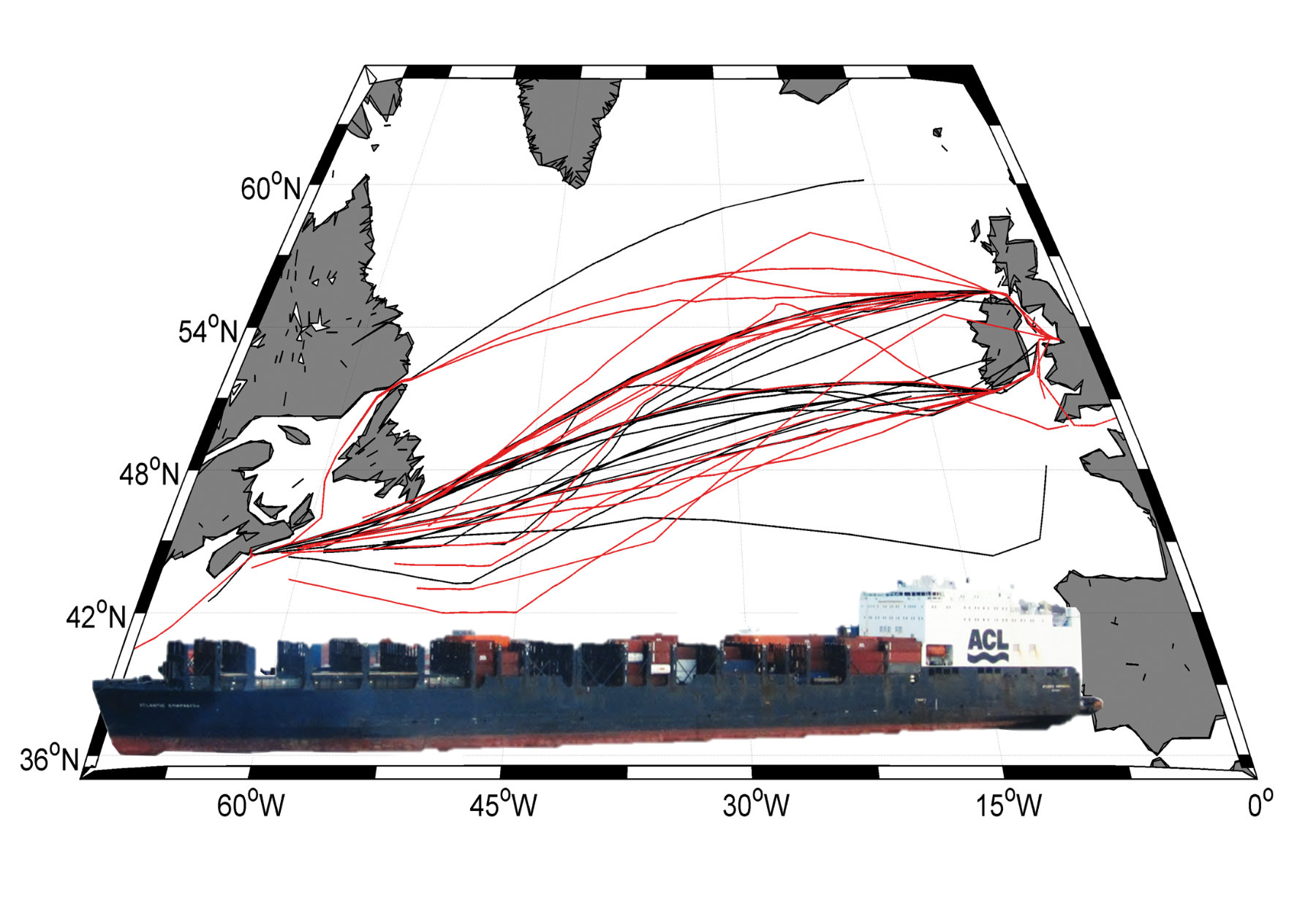
Science is in urgent need of routine, sustained global information on the marine environment which can meet society's need to describe, understand and forecast variability and long-term change. Arne Körtzinger, one of the leading scientists in this field, stresses that: "This information is only accessible through a dedicated 'observing system of systems', in which the components are synergistically linked." He adds: "The Marine ICOS observation network is such an observation system, one that provides more the 90 per cent of all surface ocean CO2 measurements." These data represent the backbone of the "Surface Ocean CO2 Atlas"[14] which, among other important uses, routinely informs the high-profile Global Carbon Budget. The North Atlantic is an area with high biological productivity and distinct seasonality. But for several biogeochemical parameters such as the stable carbon isotope ratio, this seasonal cycle is still underdetermined. An experiment designed to fill this gap has been inspired by the success of an interdisciplinary collaboration between the Körtzinger and Friedrichs groups[2]. It involved installing a commercial CRDS (Cavity Ringdown Spectroscopy) analyser on a Voluntary Observing Ship that sails the North Atlantic between Europe and North America. In total more than two years of isotope ratio data were collected from the Atlantic Companion during the course of this project. This dataset provides a good look at the seasonal variations of the carbon-13 budget of the North Atlantic Ocean. This allows researchers to make new estimates of the carbon flux between ocean and atmosphere by taking into account biological matter and the mixing of underlying water masses.
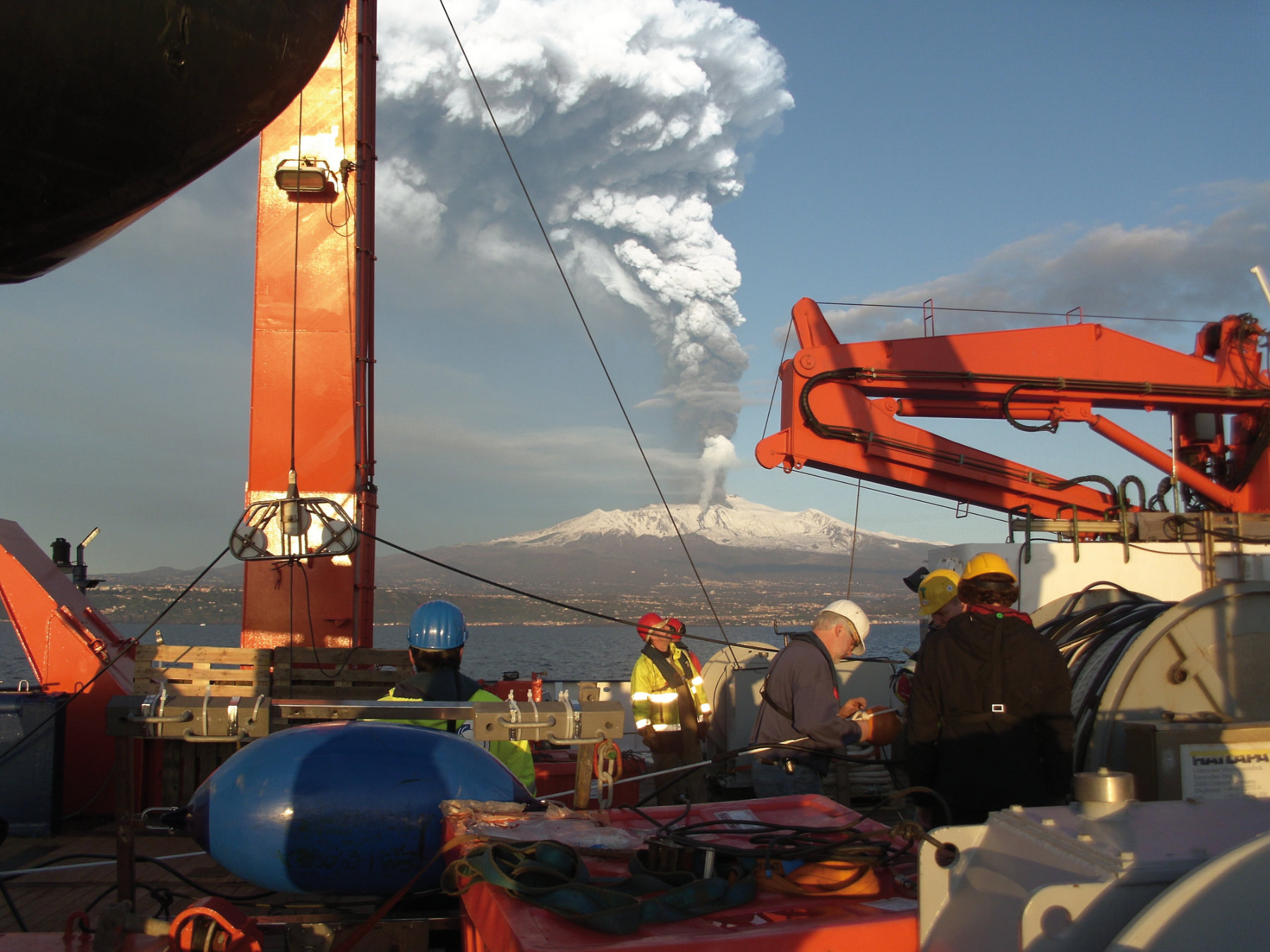
The ocean as a source and sink of atmospheric trace gases
Another natural system that needs to be understood is the role of nitrous oxide (N2O). Nitrous oxide is a potent greenhouse gas as well as playing a key role in stratospheric ozone depletion. How much of this gas is produced in the ocean, and how does it propagate into the atmosphere? Damian Arévalo-Martínez and colleagues have measured its emissions off the coast of Peru, at one of the world's largest upwelling ecosystems [7]. In an innovative use of optical trace gas analysers, they continuously measured nitrous oxide, carbon monoxide and carbon dioxide concentrations using an off-axis integrated cavity output spectrometer in combination with a non-dispersive infrared detection system (NDIR). They showed that the coastal upwelling areas can emit massive amounts of nitrous oxide to the atmosphere, and that these emissions are considerably higher than previously known, in fact being the largest ever reported. One important outcome of this study is that the regional and global budgets of this climate-relevant gas might need to be revisited. Many opportunities are open to Kiel scientists studying ocean chemistry. Christa Marandino notes: "Direct flux measurement techniques are powerful tools for investigating the physical forcing of gas exchange. With the eddy correlation technique, we can examine the role of the surface microlayer and bubbles on gas exchange directly. It allows us to measure the flux of trace gases alongside indicators of physical forcing, such as the slope of capillary waves, white caps, and wave fields." Arévalo -Martinez and Bange agree, saying: "This technique will improve our understanding of the global distribution and magnitude of trace gas fluxes across the sea surface".
But other developments will drive this field as well. New sensors and platforms will allow more precise and automated monitoring of the sea surface. For example, Friedrichs envisions the use of frequency-comb laser light sources for the simultaneous detection of many trace gases. The development of this technology led to the award of the Nobel Prize for Physics in 2005. So there are plenty of ways to add to the wish list for in-depth ocean understanding.
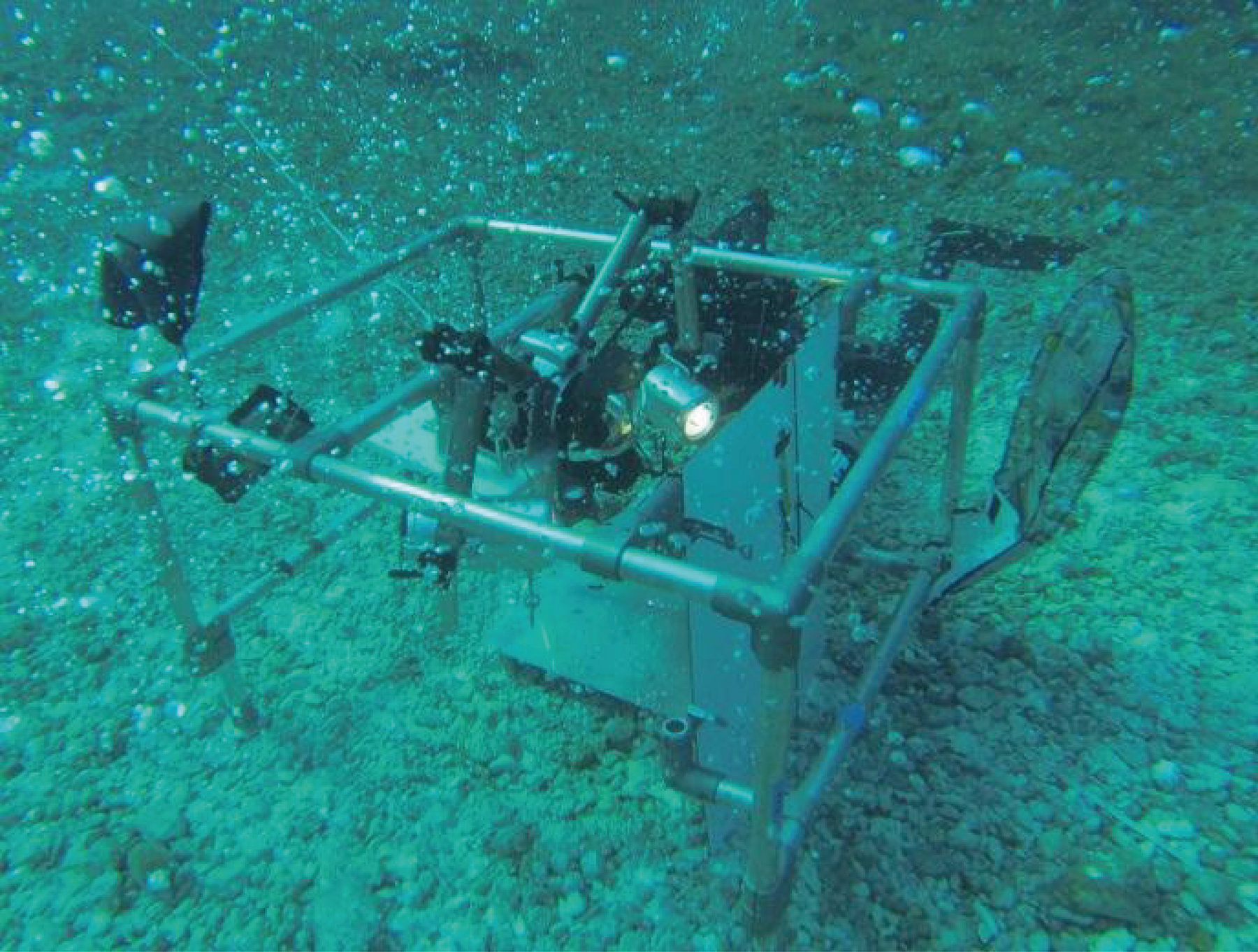
Methane Emissions
Part of Kiel's systematic research on understanding the ocean system involves work on the occurrence of methane seeps at the sea floor. These seeps have often been observed at active continental margins, for example off Costa Rica, Chile, and the Pacific coast of the US. But the mechanisms controlling these emissions are poorly understood. To their surprise, a group including Jacob Geersen, Peter Linke and Mark Schmidt observed a high methane flux off the coast of central Chile seven months after the strong 2010 earthquakes in that region [8]. This led to the development of a conceptual model explaining the mechanisms behind the high methane flux, which is amplified by the strong earthquakes which occur every 100-150 years in that area. They concluded that recurring strong earthquakes at a continental margin generate strain which in turn produces geological faulting. These earthquake-generated faults allow fluids such as methane to rise from deeper strata to the seafloor and emerge into the water column.
Kiel scientists are also investigating what happens to methane once it gets to the water column. Here, the size and activity of methanotrophic (methane-eating) communities determine the amount of methane that is consumed in the water column before entering the atmosphere. In the past, the supply of nutrients and the local water chemistry were thought to be the main influence on these communities. But we also need to understand how the physical properties of the ocean influence these emissions. A group including Lea Steinle, Tina Treude, Arne Biastoch and others from Kiel has investigated methane emissions off Svalbard to address this issue [9].
They found that ocean currents can have a major impact on aerobic methane oxidation in the water column, and therefore on the amount of methane emitted to the atmosphere. Most methane seeps are located along continental margins, where bottom water currents are often strong and fluctuating. These currents can displace local waters, which harbour efficient methanotrophic communities, and make the water column more "leaky" for methane. The study suggests that this effect is a global determinant of the distribution and abundance of methane-degrading life, and therefore on the efficiency of methane oxidation above point sources. Further investigations by Johanna Maltby and Tina Treude, involving organic-rich sediments from the Baltic Sea and in the Peruvian Upwelling system, revealed that microbial methane production is not limited to the deeper sulphate-free zone where it is usually expected. It was found too in sulphate-rich surface sediments, which means that it could directly add to methane emissions from the seafloor [10].
Ocean-Earth interaction
As well as interacting with the atmosphere via its surface layers, the ocean interacts with the solid Earth through the sea floor. Understanding the influence of the deep Earth on the ocean is as important as understanding the ocean itself. Research in this area forms part of a broader Kiel programme on marine earthquake hazards. Recent Tsunami disasters in the Pacific emphasise the need to understand this risk.
Work by Jacob Geersen and colleagues has shown that the size of a strong earthquake, such as the 2014 Iquique quake off Chile, can be much reduced if there is a rocky obstacle which prevents the seismic rupture caused by the quake extending over a wide area. They found that the presence nearby of extinct volcanoes called Seamounts limited the surface scale of the Iquique earthquake and the damage that resulted [11]. Kiel scientists are now active in southern Italy, one of the most complex areas of Europe for natural hazards. Felix Gross and colleagues have conducted detailed seismic mapping on the Eastern slope of Etna, Europe's biggest volcano. The data indicates that continental spreading, which is occurring offshore in this region, needs to be taken into account to improve stability models for the area [12].
The Kiel researchers working in Sicily include social scientists as well as geologists and seismologists. They are using an approach termed Multi-Hazard Analysis to look at the threats to this well-populated region in a connected way, and are assessing the linked hazards from faulting on land adjacent to unstable submarine slopes. Their analysis is becoming more complete as new data becomes available. This means that people in the coastal regions of the Mediterranean, including Southern Italy, can hope for more accurate and timely hazard warnings. This will let them take more appropriate short and long-term measures to protect themselves and their livelihoods.
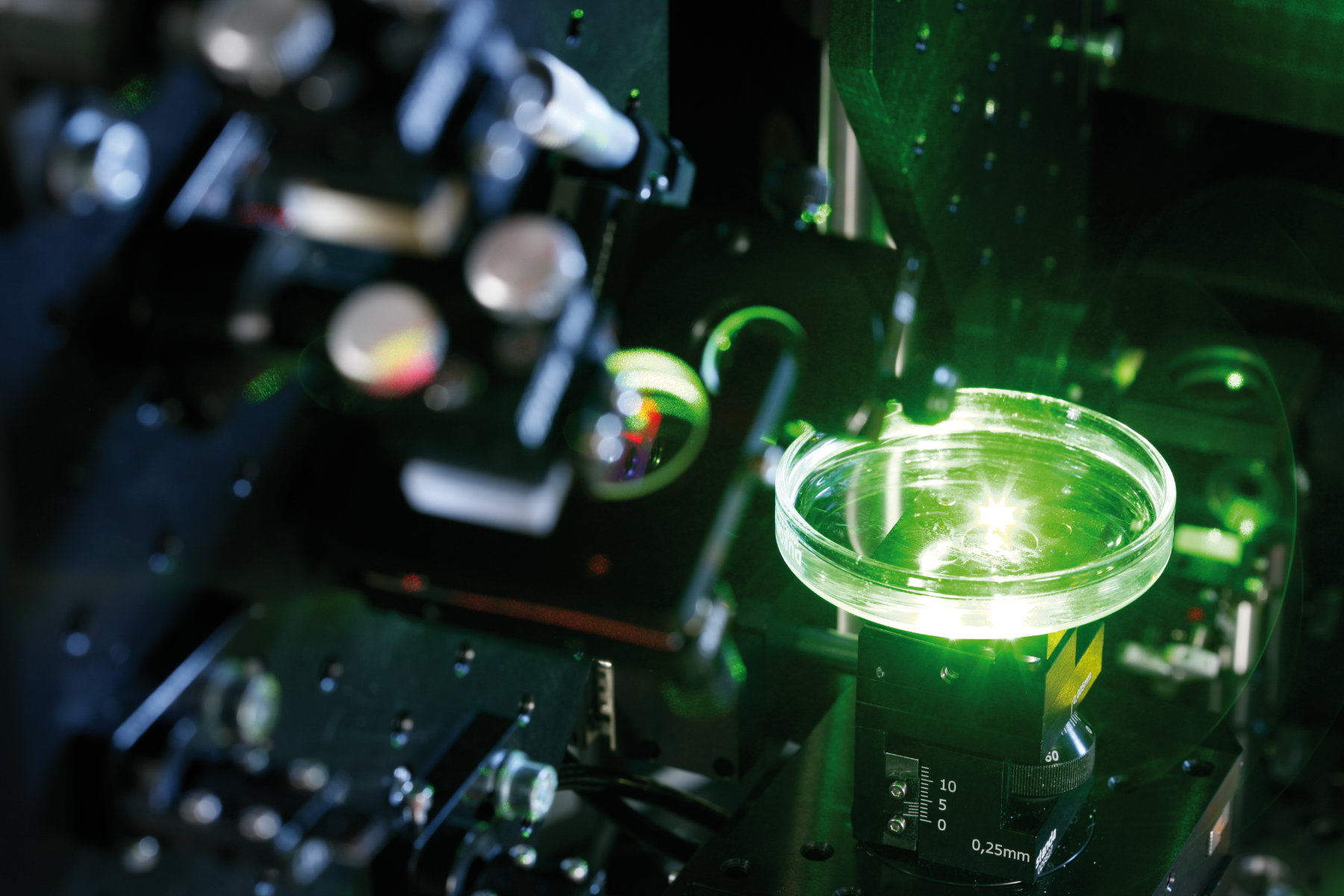
How does plastic degrade in the ocean?
Understanding these natural phenomena is only one side of the coin. Human activity is the other side of research into the marine system. The clearest example is an unwelcome human addition to the sea: litter.
Plastic litter is a big problem for the whole ocean. How long does plastic last in these environments, and is biodegradable plastic a solution? Alice Nauendorf, Stefan Krause, Tina Treude and others have addressed this problem in an experiment with sediments from Kiel's Boknis Eck field station in the Baltic [13]. They found that biodegradable plastic bags were much more strongly colonised by microbial communities from the sediment than polyethylene bags. But more importantly, neither type of bag showed any sign of biodegradation during their 100-day study.
Tina Treude concludes that: "Plastic waste is likely to accumulate in marine sediment, which might ultimately act as a long-term plastic sink." Though other studies have found partial disintegration of biodegradable plastic products in the marine system, there are no reports yet of complete biological recycling. Nauendorf, Krause and Treude stress the need for new plastics that are fully degradable by natural marine microbial communities over short timescales. They are urgently needed to avoid more plastic waste accumulating in the ocean. Nele Matz-Lück, an international law expert within the Cluster, says that the Cluster's ability to address the problem of plastics pollution shows the benefits of an interdisciplinary link between the physical and life sciences and the humanities such as law. "If we have solution-oriented projects that we can talk about to politicians, it becomes easier to argue for stricter laws to prohibit certain practices, and it gets easier to implement technology to clear up the problem."
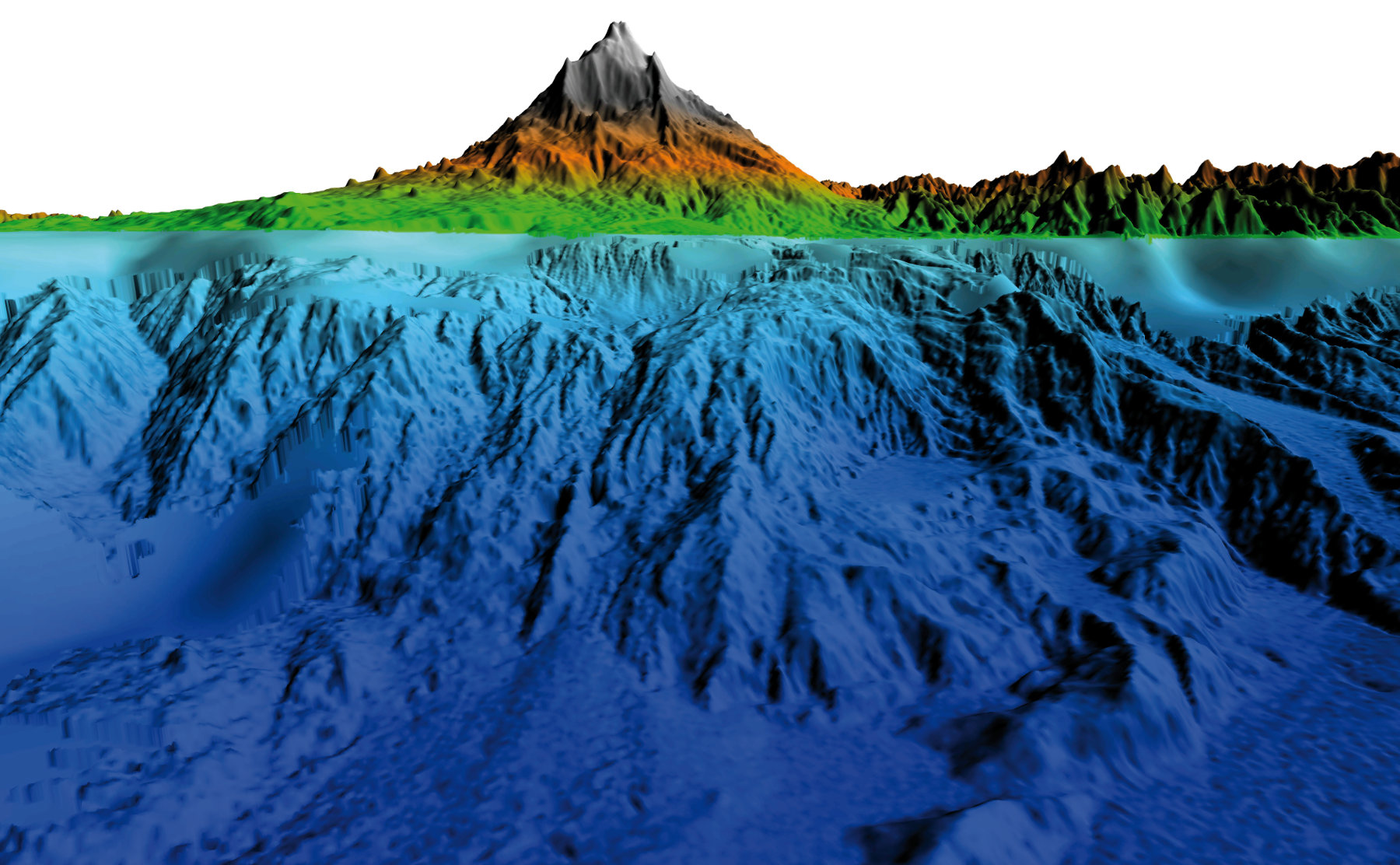
References
[1] Galgani, L., Piontek, J. und Engel, A. (2016) Biopolymers form a gelatinous microlayer at the air-sea interface when Arctic sea ice melts. Scientific Reports, 6 (Article nr. 29465). DOI 10.1038/srep29465.
[2] Becker, M., Andersen, N., Fiedler, B., Fietzek, P., Körtzinger, A., Steinhoff, T. und Friedrichs, G. (2012) Using cavity ringdown spectroscopy for continuous monitoring of δ13C(CO2) and ƒCO2 in the surface ocean. Limnology and Oceanography: Methods, 10 . pp. 752-766. DOI 10.4319/lom.2012.10.752.
[3] Laß, K. Kleber, J., and Friedrichs, G. (2010) Vibrational sum-frequency generation as a probe for composition, chemical reactivity, and film formation dynamics of the sea surface nanolayer, Limnology and Oceanography: Methods, 8, pp. 216-228. DOI 10.4319/lom.2010.8.216.
[4] Laß, K., Bange, H. W. und Friedrichs, G. (2013) Seasonal signatures in SFG vibrational spectra of the sea surface nanolayer at Boknis Eck Time Series Station (SW Baltic Sea). Biogeosciences (BG), 10 . pp. 5325-5334. DOI 10.5194/bg-10-5325-2013.
[5] Piontek, J., Sperling, M., Nöthig, E. M. und Engel, A. (2015) Multiple environmental changes induce interactive effects on bacterial degradation activity in the Arctic Ocean. Limnology and Oceanography, 60 (4). pp. 1392-1410. DOI 10.1002/lno.10112.
[6] Engel, A., Bange, H. W., Cunliffe, M., Burrows, S. M., Friedrichs, G., Galgani, L., Herrmann, H., Hertkorn, N., Johnson, M., Liss, P. S., Quinn, P. K., Schartau, M., Soloviev, A., Stolle, C., Upstill-Goddard, R. C., van Pinxteren, M. und Zäncker, B. (2017) The Ocean's Vital Skin: Toward an Integrated Understanding of the Sea Surface Microlayer. Frontiers in Marine Science, 4 . Art.Nr. 165. DOI 10.3389/fmars.2017.00165.
[7] Arevalo-Martínez, D. L., Kock, A., Löscher, C., Schmitz, R. A. und Bange, H. W. (2015) Massive nitrous oxide emissions from the tropical South Pacific Ocean. Nature Geoscience, 8 (7). pp. 530-533. DOI 10.1038/ngeo2469.
[8] Geersen, J., Scholz, F., Linke, P., Schmidt, M., Lange, D., Behrmann, J. H., Völker, D. und Hensen, C. (2016) Fault zone controlled seafloor methane seepage in the rupture area of the 2010 Maule Earthquake, Central Chile. Geochemistry, Geophysics, Geosystems, 17 (11). pp. 4802-4813. DOI 10.1002/2016GC006498.
[9] Steinle, L., Graves, C. A., Treude, T., Ferré, B., Biastoch, A., Bussmann, I., Berndt, C., Krastel, S., James, R. H., Behrens, E., Böning, C. W., Greinert, J., Sapart, C. J., Scheinert, M., Sommer, S., Lehmann, A. F. und Niemann, H. (2015) Water column methanotrophy controlled by a rapid oceanographic switch. Nature Geoscience, 8 (5). pp. 378-382. DOI 10.1038/ngeo2420.
[10] Maltby, J., Sommer, S., Dale, A. W. und Treude, T. (2016) Microbial methanogenesis in the sulfate-reducing zone of surface sediments traversing the Peruvian margin. Biogeosciences (BG), 13 (1). pp. 283-299. DOI 10.5194/bg-13-283-2016.
[11] Geersen, J. M., Ranero, C. R., Barckhausen, U. und Reichert, C. (2015) Subducting seamounts control interplate coupling and seismic rupture in the 2014 Iquique earthquake area. Nature Communications, 6 . p. 8267. DOI 10.1038/ncomms9267.
[12] Gross, F., Krastel, S., Geersen, J., Behrmann, J. H., Ridente, D., Chiocci, F. L., Bialas, J., Papenberg, C., Cukur, D., Urlaub, M. und Micallef, A. (2016) The limits of seaward spreading and slope instability at the continental margin offshore Mt Etna, imaged by high-resolution 2D seismic data Tectonophysics, 667 . pp. 63-76. DOI 10.1016/j.tecto.2015.11.011.
[13] Nauendorf, A., Krause, S., Bigalke, N. K., Gorb, E. V., Gorb, S., Haeckel, M., Wahl, M. und Treude, T. (2016) Microbial colonization and degradation of polyethylene and biodegradable plastic bags in temperate fine-grained organic-rich marine sediments Marine Pollution Bulletin, 103 (1-2). pp. 168-178. DOI 10.1016/j.marpolbul.2015.12.024.
[14] Bakker, D. C. E., Körtzinger, A., Steinhoff, T. et al. (2014) An update to the Surface Ocean CO2 Atlas (SOCAT version 2) Earth System Science Data, 6 (1). pp. 69-90. DOI 10.5194/essd-6-69-2014.
